Chapter 28
Soft Tissue Injuries
Soft tissue injuries are one of the most common problems treated in the emergency rooms and the facial region is an esthetically sensitive area with a complex variety of tissues. Around one-third of patients presenting with oral injuries have sustained soft tissue injuries.
Soft tissue in the oral and maxillofacial region absorbs a lot of energy when the region is subjected to impact from trauma. This may result in various injuries such as contusions, abrasions, lacerations and tissue avulsion. Foreign bodies are often found in the tissue. Teeth often penetrate the soft tissue and parts of the teeth may be found as foreign bodies in lacerations. Correct emergency treatment is a prerequisite for uneventful healing and the oral and maxillofacial region is an esthetically sensitive area. Failure to remove foreign bodies may result in permanent tattoos and unesthetic scarring and delayed healing and infection.
Types of Soft Tissue Trauma
Soft tissue injuries can be divided into the following types of injuries:
- Contusion
- Abrasion
- Laceration
- Tissue avulsion.
Contusion
A contusion is a bruise without a break in the skin or mucosa. Subcutaneous or submucosal hemorrhage in the tissue results in hematoma and swelling of tissue is seen (Figs 28.1, 28.2). A contusion may be isolated to the soft tissue but often indicates a deeper injury, such as an underlying bone fracture.
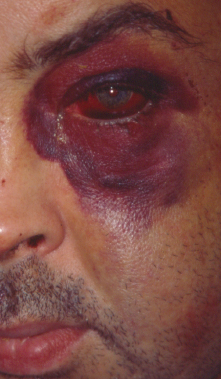
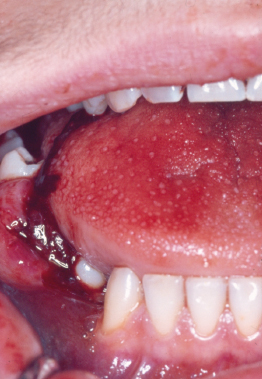
Abrasion
An abrasion is a superficial wound in the skin or mucosa produced by rubbing and scraping of the skin or mucosa leaving a raw, bleeding, and often very painful surface (Fig. 28.3).
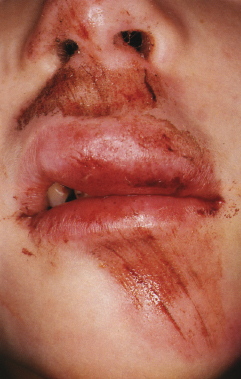
Laceration
Laceration is a wound in the skin or mucosa penetrating into the soft tissue (Fig. 28.4). A laceration may disrupt blood vessels, nerves, muscles, and involve salivary glands. The most frequently occurring lacerations in the maxillofacial region are seen in lips, oral mucosa, and gingiva. More seldom the tongue is involved.
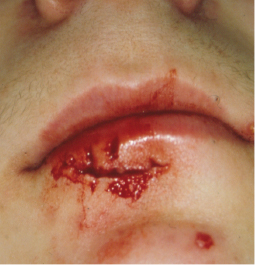
Avulsion
Avulsion (loss of tissue) injuries are rare but seen with bite injuries or as a result of a very deep and extended abrasion (Fig. 28.5).
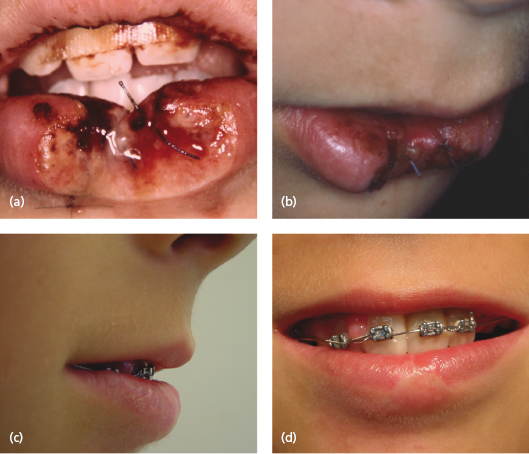
Emergency Management of Soft Tissue Injuries
Besides medical history and history of medications it is important to determine the mechanisms of injury and time of occurrence to provide information of any potential foreign bodies that may affect healing. Moreover, it is important to know the tetanus immunization status of the patient.
Abrasion
Abrasions require thorough lavage and irrigation along with careful inspection and removal of any solid remnants and necrotic epithelium. Remaining irritants may be the source of prolonged inflammation, infection, and discolorat/>
Stay updated, free dental videos. Join our Telegram channel

VIDEdental - Online dental courses


